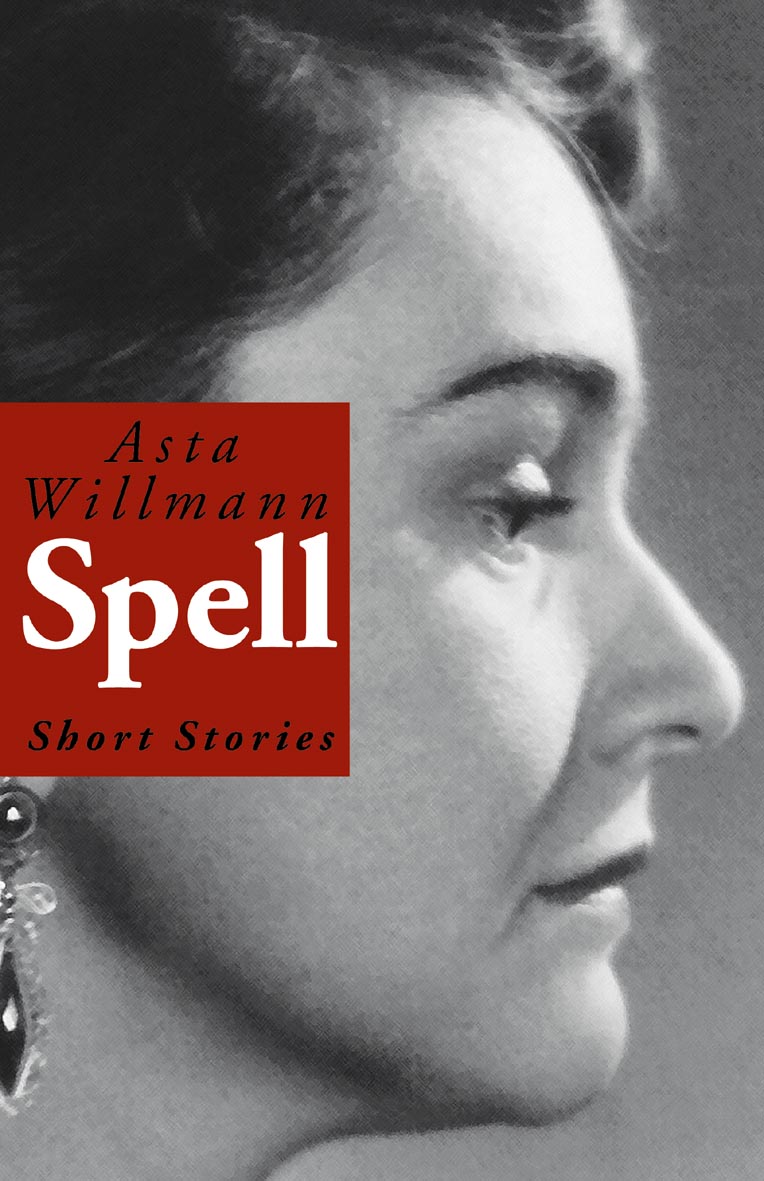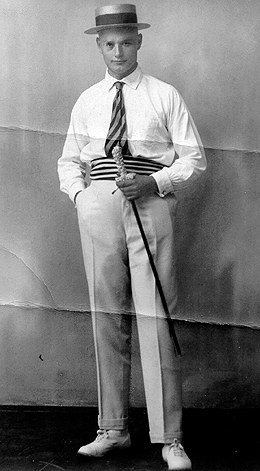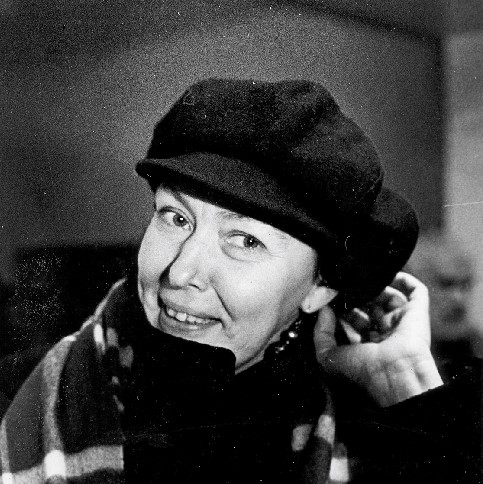Autumn 1944 started the diaspora of Baltic peoples; exile scattered Estonian literature all over the world. Until that time, Estonian literature had been mostly created in Estonia. After 1944, in the course of at least a dozen years or so (ca 1944-1956) new literature emerged largely outside Estonia.
The majority of readers – domestic readers – were cut off from most of the new literature; access to book published earlier was also hindered. The situation started to gradually improve from 1956, although the balance between literature written at home and that produced abroad acquired some sort of balance as late as the 1960s. Much of the literary output emerging wherever the Estonians had settled relied heavily on Estonian history. After all, just as there cannot be a nation without a language, there cannot be a nation without its own history.
A large part of the best prewar writers chose exile. In additon to them, numerous new authors appeared as well. One of them was Asta Willmann (1916 – 1984), a diverse creative person, an actress, theatre director and writer whose output includes all main genres of literature. Her successful acting career in Estonia began as a child-actress in the radio theatre. While working in Pärnu theatre on the eve of the war, she debuted as a writer for young adults. Towards the end of the war she fled to the West, one among about one hundred thousand Estonians. She began her studies at the Stockholm University and published her first collection of poetry. In 1951 Willmann went to Canada, later moved to the US.
Asta Willmann’s breakthrough book was the collection of short stories Lumm (Spell), published in Toronto. It contains eight short stories that demonstrate her remarkable ability as a fabulist, her natural talent of storytelling and depicting her characters. Willmann’s poetry mostly spoke about the loss of one’s homeland and the moods of being in exile, relying largely on the earlier tradition of Estonian poetry. In the collection of short stories, however, she makes a U-turn and distances herself from the national paradigm. The stories take place in different parts of the world, mostly in Scandinavia, and in a few short stories also in Estonia.
The writer focuses on the sudden changes in human consciousness that open up the hidden resources of human nature. A character in a border situation makes an abrupt decision, bringing about a radical change of the entire previous life. Thus Berit in the saga-like story The Fruits of Sin runs off into the tundra, stark naked, to escape from her brutal and randy husband. She starts new life with two reindeer breeding twins, becomes free and independent in her thoughts and deeds. An unexpected decision of an ordinary insignificant person, however, may well come from a sudden moment of enlightenment, clarity, and take on paradoxical forms. Romantic defiance in Asta Willmann’s works is often associated with rather grotesque popular humour when a one-dimensional person becomes aware of the many-dimensional world, and the liberating contact is experienced in a grotesque form. The penitent Kustas becomes a pietist whose simple-minded sincerity crashes against the mindless laughter of his sisters and brothers of his congregation. The narrow-minded old church sub-deacon, a cramped soul, becomes all of a sudden enraptured by a miraculous gadget – the radio; the village fool discovers theatre, etc. On the basis of the inverted Christmas tale, The Game, Willmann later wrote a successful play.
Her main oeuvre, the 5-part novel From Ashes to Earth (1961-1968), is simultaneously a long romance and a markedly nation-centred research of the past where the writer analyses elements that build up a nation and demolish national life-force. This is an examination of an individual drama in wider social context or a psychological panorama about the period of Estonian independence seen through a woman’s eyes whose personal life drama has run parallel with that of the Estonian country and people. The bulky work gives an overview of rural and urban society, moving from one character to the next. “The aim was to find out from the past what were lean ashes and what fertile earth,” the author wrote. “To depict the vital dynamics of a nation during a brief period of independence and explain how that dynamics could have collapsed.” Although the writer names Estonian people as the protagonist of the novel, the intrigue focuses on the fate and marriage of the orphaned Maria Mets (Iia). The romantically started relationship with the lawyer and ladies’ man Ervin Tiedeberg turns into a merciless battle and ends with a crash. Willmann divides her characters into earth people who carry the life creating elements, and people of ashes who bring destruction.
Contrary to freedom-yearning Iia, Ervin belongs among people of ashes, bearing elements of disaster with him. Childhood, although difficult, but spent in healthy rural environment, has provided one (Iia) with joy and vitality, whereas the other (Ervin) is burdened with negative childhood memories, being emotionally immature and yearning for constant adoration. Willmann’s treatment of characters contains quite a bit of spontaneous feminist bathos. The novel relies heavily on the works of the classic of Estonian literature – A. H. Tammsaare – especially his epic novel Truth and Justice, and also Life and Love.
Asta Willmann’s second novel, “Baiting the Wolves”, which tries to unite theatre and literature, was published in 1975. Here she takes a look at different generations of exile Estonians, and their relationships on the basis of generations and world views. The intrigue revolves around New York Estonians who stage two plays; the texts run alongside each other, are connected with the same plot and characters. The result is interesting, although the parts of the experiment are stronger than the whole.
All her life Asta Willmann actually divided herself between theatre and literature. Besides novels and collections of short stories we should mention texts for theatre, the most outstanding here being A Riddle for the Gods about Antigone. For the latter work she received her Master of Fine Arts degree at Yale in 1963, where she studied directing and playwriting. This was followed by a ten-year period of head of drama department at Hartford Conservatory (1963 – 71) when she wrote English-language drama The Game, etc.), compiled various theatrical programmes (collage “The Women’s Liberation Movement” about women in the works of Aristophanes, Ibsen, Chekhov and Shaw) and staged plays. When she gave up teaching in 1971 she carried on at a studio theatre (Performer’s Studio at “The Repertory Theatre of New Britain”).
When the Estonian PEN Club sought new people to replace the board of aged Swedish Estonians, the choice fell on Asta Willmann. She took part in the PEN club congress for the first time in New York in 1966. In 1972 she became secretary and treasurer of the Estonian PEN; in 1982 its chairman. For Soviet Russia, this literary club of occupied Estonia was a thorn in its side. The club, just as other similar institutions (Latvian PEN club), was keen to preserve its extraordinary status that awarded both de facto vanished countries equal rights at international forum. Willmann who joined an actor’s performing skills and a writer’s patriotic sentiments was just as successful in speaking at international conferences as in her theatrical work.
Willmann was a perfectionist in everything she undertook, being too forceful to remain marginal, but nevertheless she sometimes failed to realise her aspirations fully. Her theatrical work took place outside the Estonian language space, in remoter areas or in amateur circles. In literature she belongs among writers who continued the traditions of psychological and social-critical realism of the 1930s. Willmann’s attempts to refresh novel were limited to methods of drama, she stages a novel, so to speak.
Arranging mise en scénes, adding colourful characters, using abundant dialogue, she disperses her message. Her language is rich in images, rare words, archaisms. Willmann’s novels are pretentious works, attempts of a sort to create their own aesthetic universe. Her mission was to devote herself to both Estonian theatre and literature in exile that secured her the necessary freedom for her work, but restrained the means of creative self-realisation. For the impulsive and prejudice-rejecting Asta Willmann who belonged among the keepers and creators of national literature and history in exile, the distance from the language environment was certainly a hindrance. Combining and analysing national and popular, international and eternal topics, she often rose above national duties, aspiring towards something internationally interesting. This at any rate is what she chose in her collection of short stories Spell , where the focus is on personal freedom.
—-
Considering all the Estonian women writers born during the first third of the 20th century, Asta Willmann clearly belongs among the first five. Beside Betti Alver, Käbi Laretei, Kersti Merilaas and Debora Vaarandi, however, Willmann is almost unknown to the Estonian reader. One reason is certainly the fact that her main work, the five-volume From Ashes to Earth (Lund, 1961- 68), is not available to the readers as are the works of other writers mentioned above.
The novel could also be regarded as a sort of re-write of A. H. Tammsaare’s Truth and Justice from the point of view of a woman. Willmann set herself an ambitious aim of depicting the essential creative factors that give life to a nation, and the elements that eat away at a nation’s life force. She also gave a panoramic overview of the life of different layers of society in the Republic of Estonia in the 1930s.
It has proved true that introducing exile literature in the canon of Estonian literature will best work through new publications, i.e. making the works readily available to readers in Estonia.
© ELM no 16, spring 2003




